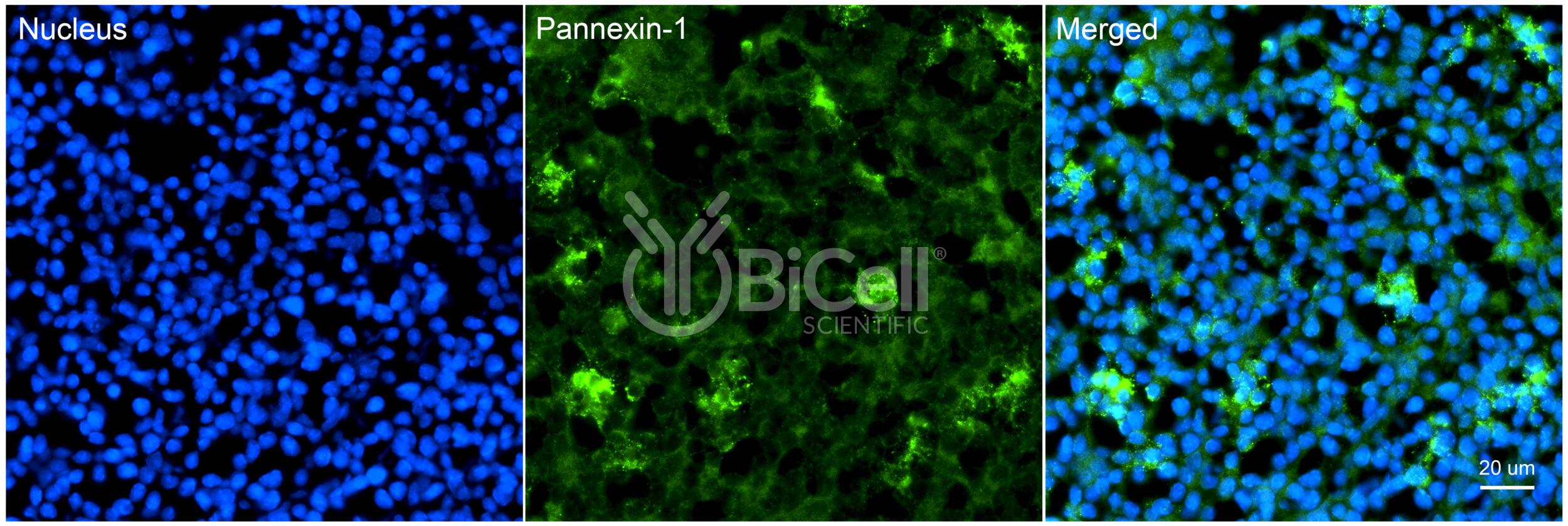Pannexin-1 (PANX1) Antibody
Description
Anti-Pannexin-1 (PANX1) antibody is validated on mouse tissue and can be used for immunofluorescence labeling, IHC, or western blot of materials from rodent and human tissues. Pannexins are a family of vertebrate proteins identified by their homology to the invertebrate innexins. While innexins are responsible for forming gap junctions in invertebrates, pannexins predominantly exist as large transmembrane channels allowing the passage of ions and small molecules such as ATP. Structurally, pannexins and connexins are very similar, consisting of 4 transmembrane domains, 2 extracellular and 1 intracellular loops, along with intracellular N- and C-terminal tails. Despite this shared topology, the protein families do not share enough sequence similarity to confidently infer common ancestry. Pannexin-1 is encoded by the PANX1 gene in human. Pannexin-1 may play a role as a Ca2+-leak channel to regulate Ca2+ homeostasis in the endoplasmic reticulum.
| Application: | Immunofluorescence, Immunohistochemistry, Western Blot |
|---|---|
| Clonality: | Polyclonal |
| Concentration: | 0.25 mg/ml |
| Conjugation: | Unconjugated |
| Host: | Rat |
| Immunogen: | Synthetic peptide (17-aa) derived from the N-terminal cytoplasmic region of mouse Pannexin-1 protein |
| Isotype: | IgG |
| Purification: | Affinity Chromatography |
| Reactivity: | Human, Mouse, Rat |
| Species Homology: | Synthetic peptide sequence is identical to rat sequence (showing 94.1% homology to human sequence) |
| Storage: | -20°C |
| Storage Buffer: | PBS, pH 7.2, 0.1% Sodium Azide |

